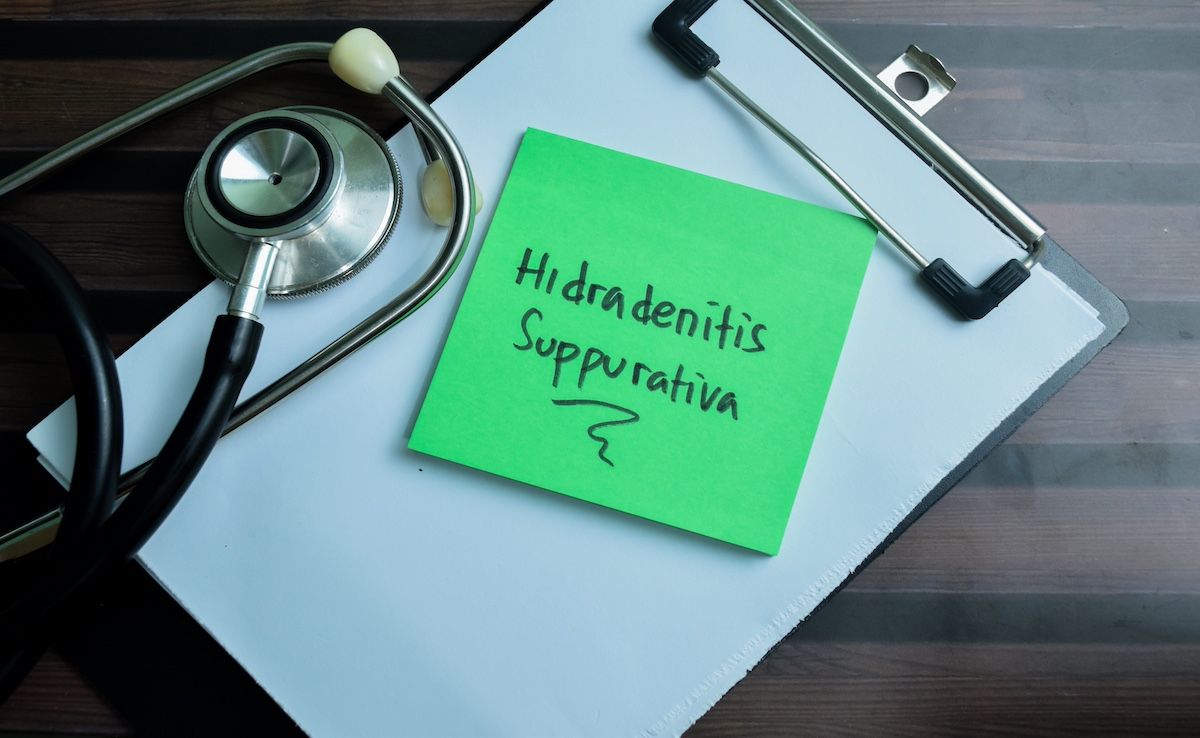- Center on Health Equity & Access
- Clinical
- Health Care Cost
- Health Care Delivery
- Insurance
- Policy
- Technology
- Value-Based Care
C-Reactive Protein May Guide HS Treatment Choices
With high biologic treatment failure rates common among patients who have hidradenitis suppurativa (HS), investigators set out to evaluate the potential of biomarkers to estimate potential treatment response.
Beyond the use of dermal tunnels and family history to estimate treatment response for hidradenitis suppurativa, experts hope biomarkers are a next step in optimizing treatment for individuals living with the chronic inflammatory disorder. Several researchers recently conducted a post hoc analysis of the phase 3 PIONEER I (NCT01468207) and PIONEER II (NCT01468233) trials to clarify the utility of serum C-reactive protein as a marker of response to the biologic adaliumumab, publishing their results online today in JAMA Dermatology.1
Adalimumab is the only medication currently approved by the FDA to treat hidradenitis suppurativa—it is sold as Humira by AbbVie in the US—and that approval for moderate to severe disease was handed down on September 10, 2015.2 The approval was based on data from PIONEER I (November 29, 2011-January 28, 2014) and PIONEER II (December 28, 2011-April 28, 2014) and followed a May 2015 orphan drug designation.3
Across the patient cohorts of both studies (N = 588), the mean (SD) age was 36.4 (11.2) years, Hurley stage II was more common than stage III (53.9% vs 46.1%), mean body mass index (BMI) was 32.9 (7.8) kg/m2, there were more female patients vs male patients (65.5% vs 34.5%), and 23.6% had a family history of the disease. At baseline, their median (IQR) International Hidradenitis Suppurativa Severity Score System (IHS4) score was 22 (11-40), median abscesses/inflammatory nodules were 10 (6-16), median abscesses were 1 (0-3), median inflammatory nodules were 7 (4-13), and median draining fistulas were 2 (0-5).
With high biologic treatment failure rates common among patients who have hidradenitis suppurativa, investigators set out to evaluate the potential of biomarkers to estimate potential treatment response. | Image Credit: © syahrir-stock.adobe.com

Overall, more patients included in this post hoc analysis had elevated C-reactive protein at baseline (464 vs 124 patients), which was defined in the PIONEER studies as being above 0.23 mg/dL. The median elevated level was 1.23 (0.65-2.81), and the median normal level, 0.16 (0.10-0.22).
Patients in the group with elevated C-reactive protein also had higher baseline mean BMI (34.1 [7.9] vs 28.6 [6.0] kg/mg2), more had Hurley stage III disease (51.5% vs 25.8%), median IHS4 score was more than double (25 [14-45] vs 12 [7-23]), and total number of abscesses/inflammatory nodules, abscesses alone, inflammatory nodules alone, and draining fistulas was higher (22 vs 15).
Patients were randomized to receive 40-mg weekly adalimumab or placebo for 12 weeks, at which point they were evaluated for clinical response.
The investigators saw that having baseline elevated C-reactive protein correlated with a 47% greater risk of reduced clinical response (OR, 0.53; 95% CI, 0.34-0.83; P = .006). However, receipt of adalimumab also correlated with a greater chance of clinical response in both those with baseline elevated (OR, 3.18; 95% CI, 2.13-4.81; P < .001) and normal C-reactive protein (OR, 2.25; 95% CI, 1.06-4.88; P = .04). In addition, just among the patients with baseline elevated C-reactive protein, each unit increase in the protein was linked to a lesser chance of treatment response (OR, 0.99; 95% CI, 0.97-1.00; P = .04).
“Assuming linearity, the OR of clinical response for adalimumab recipients with [C-reactive protein level] of 2.81 mg/dL (third quartile of elevated [C-reactive protein]) vs 0.30 mg/dL was 0.70 (95% CI, 0.49-0.97),” the authors explained.
Because of their findings, the authors suggest that patients who have a more severe degree of inflammation may not benefit as greatly as patients who have less inflammation, and they recommend prospective research more clearly define the cutoff for someone unlikely to benefit from adalimumab.
References
1. Gunter SJ, Porter ML, Kimball AB. C-reactive protein and response to adalimumab in patients with hidradenitis suppurativa: a post hoc analysis of 2 randomized clinical trials. JAMA Dermatol. Published online January 8, 2025. doi:10.1001/jamadermatol.2024.5146
2. Blaszczak A, Trinidad JCL, Cartron AM. Adalimumab for treatment of hidradenitis suppurativa during the COVID-19 pandemic: safety considerations. J Am Acad Dermatol. 2020;83(1):e31. doi:10.1016/j.jaad.2020.04.030
3. AbbVie's Humira (adalimumab) receives first and only U.S. Food and Drug Administration approval for moderate to severe hidradenitis suppurativa. News release. AbbVie. September 10, 2015. Accessed January 8, 2025. https://news.abbvie.com/2015-09-10-AbbVies-HUMIRA-Adalimumab-Receives-First-and-Only-U-S-Food-and-Drug-Administration-Approval-for-Moderate-to-Severe-Hidradenitis-Suppurativa
